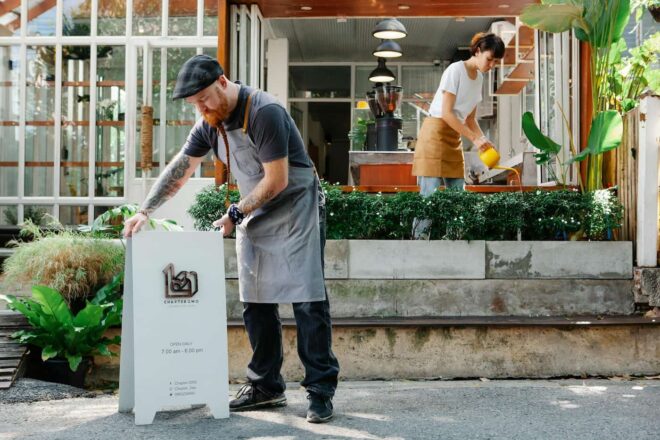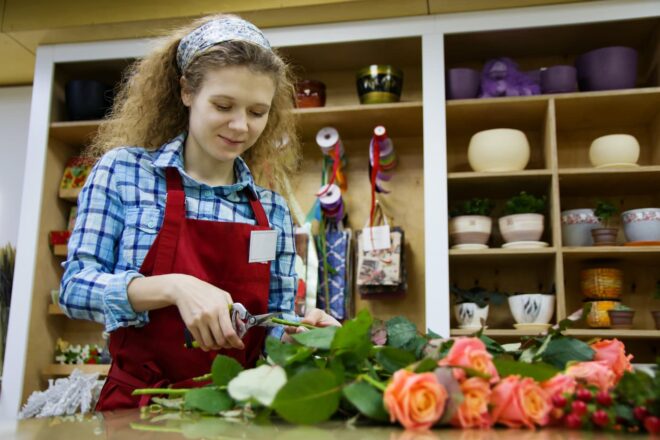As we slowly begin to exit the pandemic, there’s light at the end of the tunnel for restaurants and other food and beverage businesses. But some of the new customer expectations that arose during the pandemic are likely here to stay. Still other new trends represent opportunities for those businesses that can stay nimble and change with the times.
Here are 5 food and beverage trends that likely aren’t going away post-pandemic:
The hybrid model is here to stay
Many restaurants, even higher-end establishments, shifted their business models to offer takeout during the pandemic. Some even branched out into entirely new areas, such as selling pantry essentials (especially early in the pandemic, when shortages were common), meal kits and new meal formats like family-style dinners or pre-packed picnics.
Now that customers have experienced the convenience of getting anything and everything (including alcoholic beverages) to go, they won’t turn back. Even as more customers become comfortable dining in again, they’re likely to keep up the takeout habit. Look for creative ways to help your customer create a special-occasion feeling at home, whether through menu specials or occasion-oriented meal kits.
Sanitation and contactless options
We’re at a pivot-point in the pandemic right now. Some people are fully vaccinated and resuming normal activities, while others aren’t or have small children who can’t get vaccinated. A continued focus on sanitation and other ways to make customers feel safe will help people make the transition back to in-person dining.
Contactless ordering and payment will also continue post-pandemic, both for sanitary reasons and for convenience. These trends point to the continued importance of customers’ mobile phones in the dining experience. Look for creative ways to use your place in your customers’ pockets to your advantage, such as through rewards programs. And check out Clover Customer Engagement! It’s a robust toolsuite that helps you nurture and expand customer relationships – plus it comes free with your Clover POS.
The rise of contactless ordering and payment is also one of several trends pointing to the changing role of front-of-house staff. Contactless ordering systems require tight integration between front- and back-of-house, and reduce some of the most visible contact points between customers and waitstaff. While the pre-pandemic trend towards eliminating tipping has faded, there’s still grassroots pressure to eliminate tipping and raise the minimum wage. Meanwhile, waitstaff are dealing with the burden of enforcing unpopular health rules on the very customers they depend on for tips. Listen to your front-of-house staff and work with them to create policies that will reduce tension and keep customers happy.
New urgency to wellness
All things health and wellness are getting renewed focus from customers, in a variety of ways. Plant-based meals are becoming more and more mainstream. Sales of plant-based foods grew more than 2.5 times as quickly as overall food sales from 2018 to 2020, and the trend is only continuing. Interest in environmentally sustainable foods is also continuing to grow.
Trend-watchers also see customers continuing to focus on “functional” ingredients that proponents say can promote health and boost immunity. At the same time, after more than a year of enormous stress, customers are craving comfort foods. Better-for-you, plant-based, or immunity-boosted versions of comfort classics will likely have broad appeal.
International foods and flavors
With international travel still largely off limits, trend-watchers say customers are craving international flavors. Because of the growing focus on sustainability and conscious consumption, some chefs are sharing the stories behind the unique international ingredients on their menus. Think lesser-known spices, or mezcal from a specific village over generic tequila. There’s also a growing trend to be more specific about the regions and traditions menus are drawing on—a dish is not just Chinese, it’s Szechuan.
Experts also expect virtual cooking classes to continue to be popular. Customers have gotten used to attending virtual events, and a cooking class is another way to create a special occasion experience safely, in the home, that can also build a more intimate connection between you and your customer. It can also become a nice supplemental revenue stream.
Hospitality is front and center
Comfort is also key when it comes to the in-person dining experience. For many people, the pandemic has been a wake-up call reminding them of the importance of the simplest things in life, like gathering with family and friends. People are craving those connected experiences right now, and many are only just beginning to feel safe meeting up in person again. Think about how you and your staff are creating the space to have that simple-but-so-special experience.






